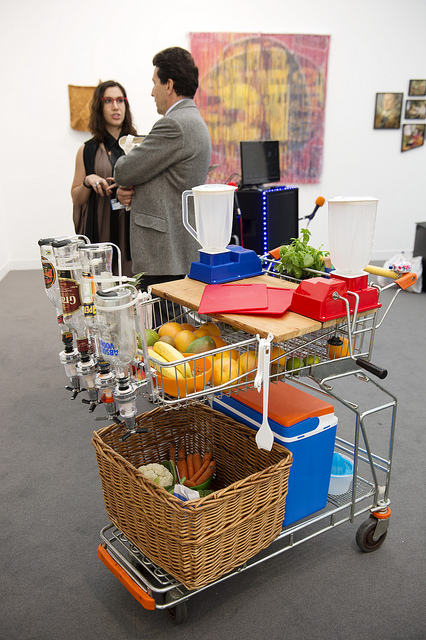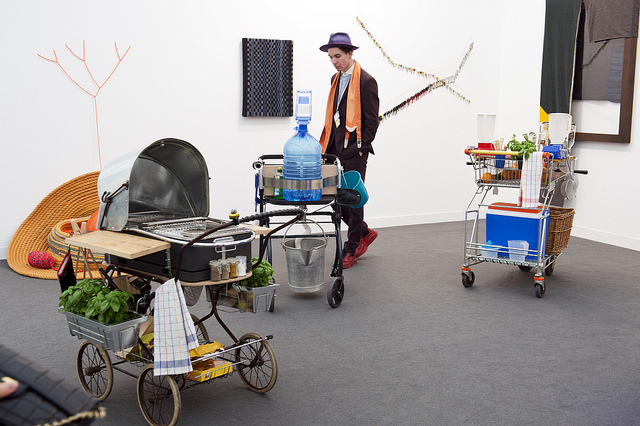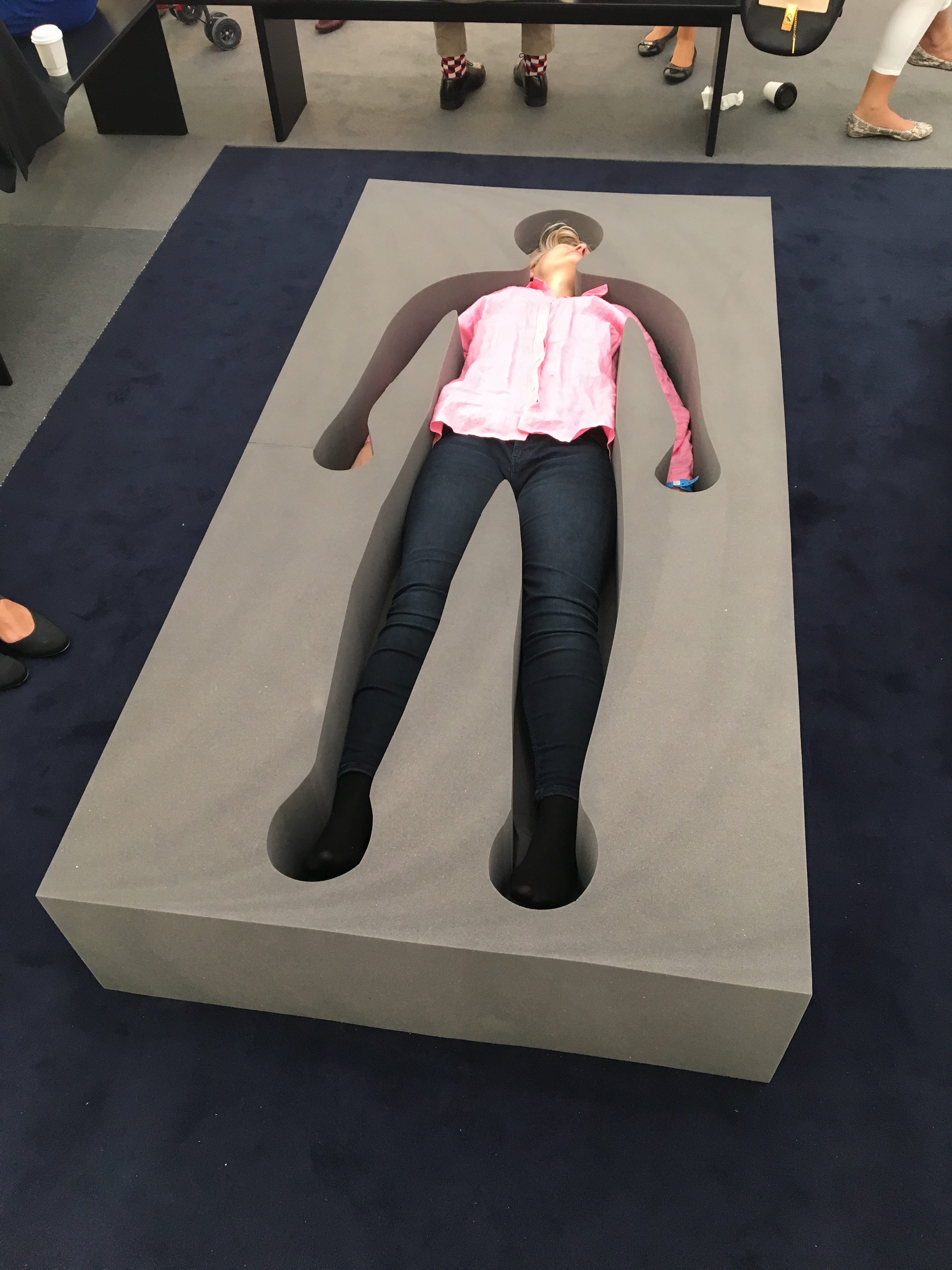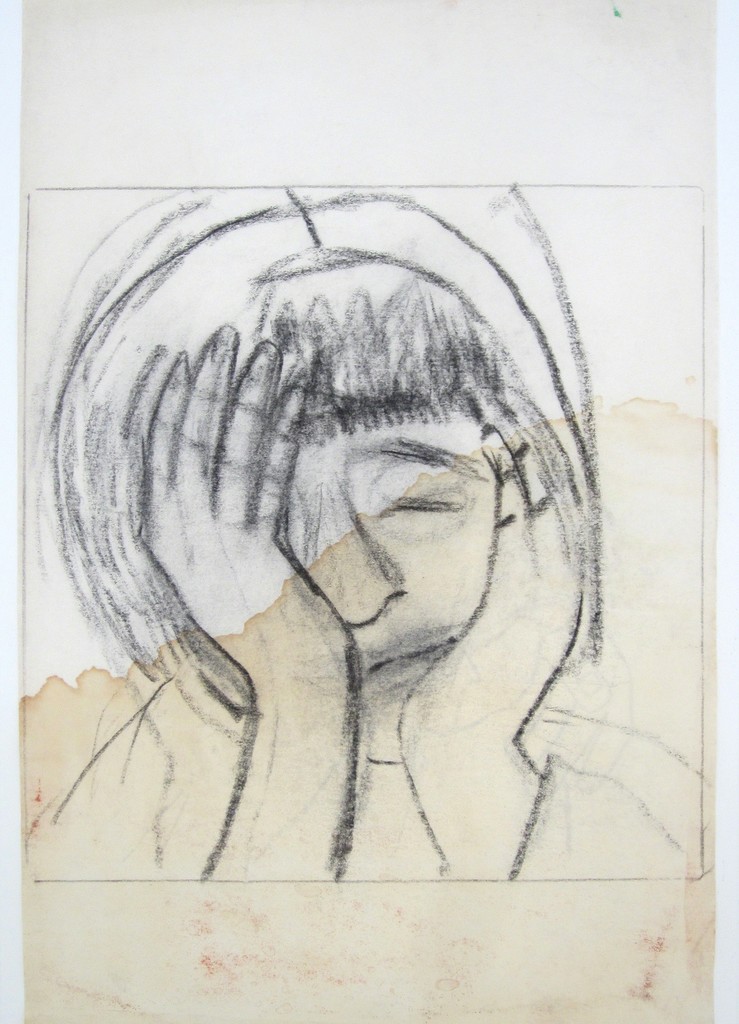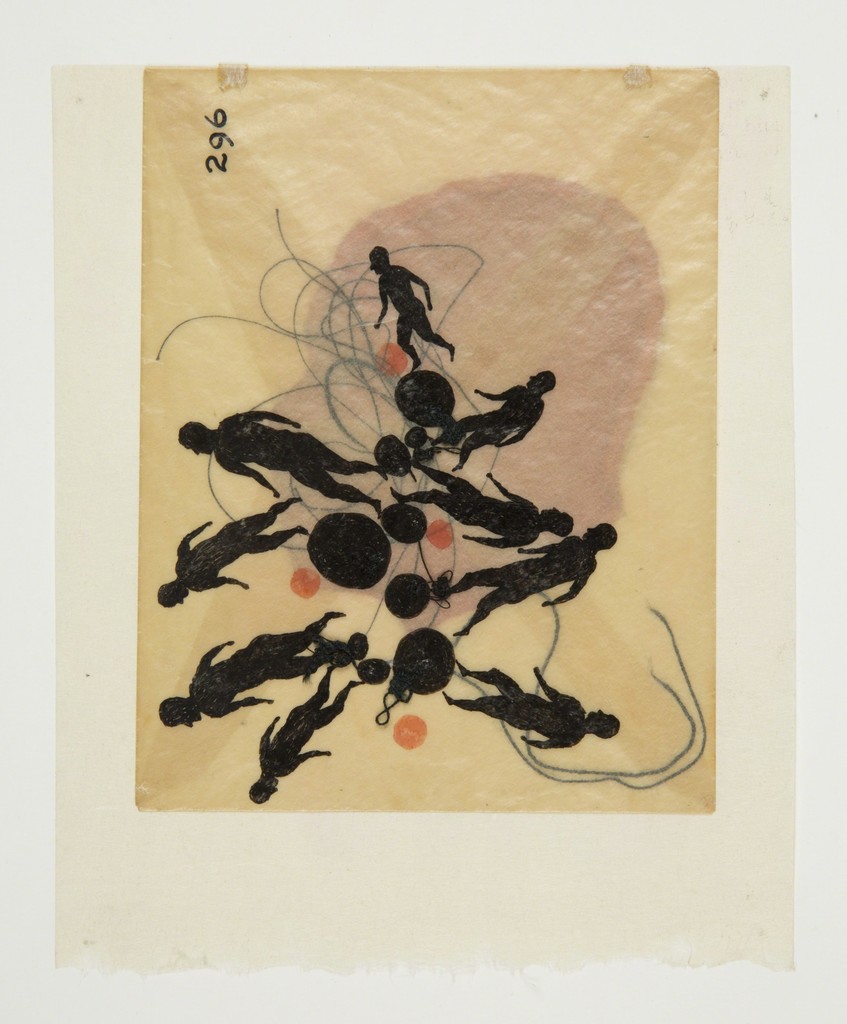Frieze London are featuring a number of galleries showcasing Brazilian and Columbian artists. The work includes commentary on the political repression and murders of the 80s and 90s, as well as contemporary sculptors who shine a light on the trends and preoccupations of their time, from caipirinhas to corruption.
A Gentil Carioca, Rio de Janeiro
The name of this gallery translates to ‘a kind Rio-dweller’ in English, and all of the work has an unassuming, friendly quality. On entering the booth, what strikes first are four colourful sculptures crafted by collective OPAVIVARÁ!, which reference and capture essential facets of Rio life – the classic caipirinha cocktail and traditional grilled meat. A karaoke machine is propped up on a wheelchair; a barbecue grill nestled inside a pram. The practical is synthesised with entertainment and leisure, child-rearing with eating, injury and disability with song, drinking cocktails with shopping. This blending together speaks volumes about Rio culture, where work and play and pain and pleasure do seem to co-exist beautifully.
Galería PM 8, Spain, & Galeria Jaqueline Martins, São Paulo
Marhta Araújo, an artist from the Northeast of Brazil, showcases three large foam mattresses, designed in 1986, in the fair’s live section. Passers by are invited to nestle themselves inside human-shaped holes in these soft foamy beds, where they can enjoy a brief moment to themselves. The pieces feel particularly pertinent at Frieze, where the sheer quantity of people and visual information can leave you feeling overwhelmed and exhausted–a moment in the foam feels like a return into the self, a chance to catch your breath and recalibrate.
Galeria Jaqueline Martins also showcases Brazilian artist Daniel de Paula’s ‘Inseparable spacial structures’, in which metallic materials from construction sites are melded together in sharp, angular arrangements. You can pick the pieces up and re-configure them, drawing you into the constructive process. The artists himself visited construction sites around Brazil to get the materials, and the idea of sourcing from the industrial origin is central to the essence of the works. Daniel de Paula’s work has a political undertone, hinting at the often corrupt political influence held by construction companies in Brazil.
Casas Riegner, Bogotá
Here, some of the most prolific and influential artists in recent Columbian history are showcased side by side. José Antonio Suárez Londoño is considered one of the fathers of drawing in the country. His charming and funny diaristic works blend together sketches, notations and clippings, as well as recurring motifs of birds and adorable portly men. Beatríz González, another extremely influential artist, draws on Columbian cultural and political phenomena in her work, particularly images she finds in the press. The images displayed in the booth are from 1998 – deeply emotional charcoal sketches of mothers whose children had been kidnapped by the Las Farc guerrilla group in 1996. The drawings mark a tonal shift from González’s more conventional bright and colourful works – the rough strokes of the charcoal on stained paper capture the brutality and suffering of the events.
Frieze London runs until 9 October at Regent’s Park, London
